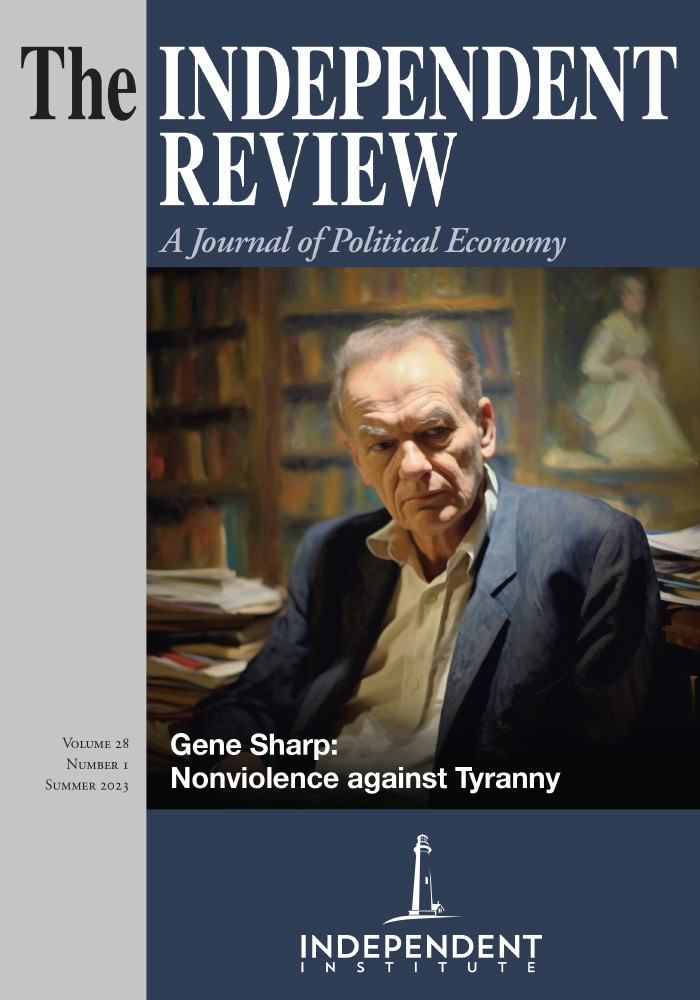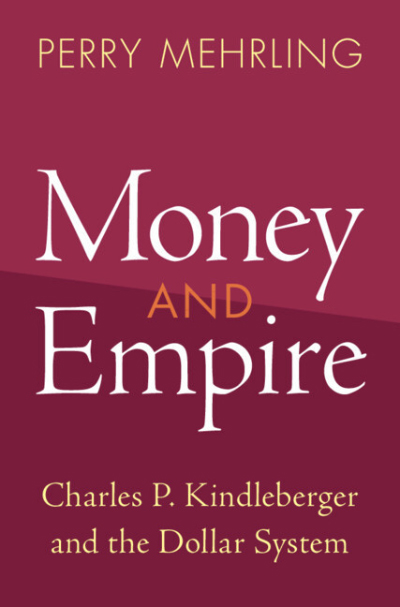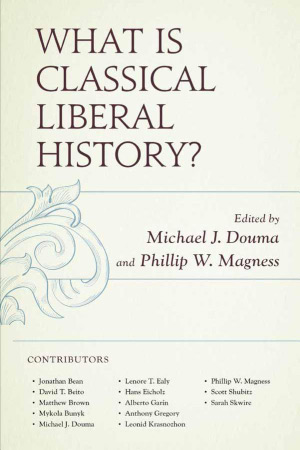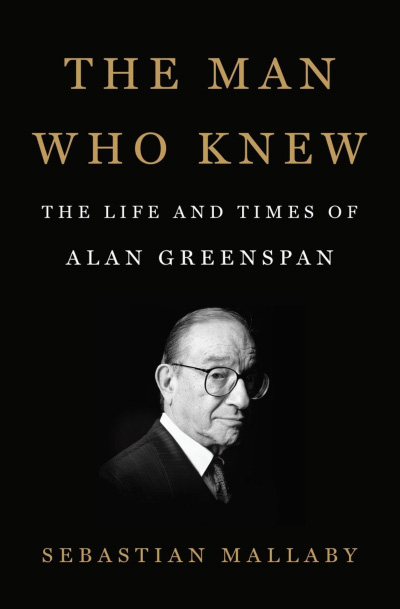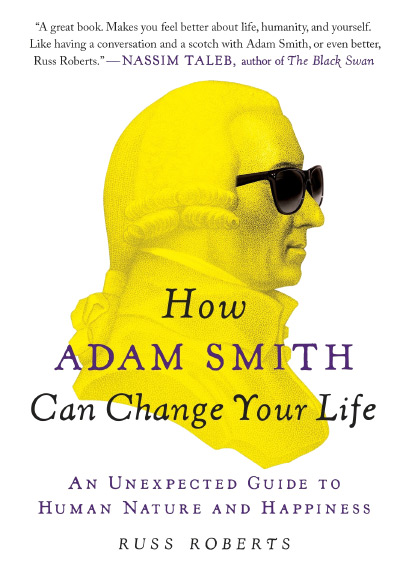A genre of religious joke follows this paraphrased form, which can be rewritten to pick on any particular denomination:
I saw a man about to jump from a bridge. I approached and said: “Wait! Do you believe in God?”
He replied, “Yes.”
“Wonderful. Are you a Christian, a Jew, a Muslim...?”
“Christian.”
“Great. Protestant or Catholic?”
“Protestant.”
“Excellent. What denomination? Baptist, Methodist, Lutheran...?”
“Baptist.”
“Me too! Northern or Southern Baptist?”
“Northern Baptist.”
“Heathen!” I yelled, as I pushed him from the bridge.
A reader of A Modern Guide to Austrian Economics might come away thinking that Austrian economists are a bit like the Baptists in this joke: tribalistic and prone to schism. That impression would not be without merit. A little background might help contextualize why this collection of essays by modern practitioners of Austrian economics feels so disjointed.
There are some basic divisions among camps of modern Austrians. These boundaries are amorphous and a number of scholars work across the divides. But at least in the U.S. context, one key division stands out. Since graduate school, echoing the macroeconomic debates of the 1970s, I have referred to “Freshwater” and “Saltwater” Austrian economists. Freshwater Austrians are mostly associated with the Mises Institute in Auburn, Alabama, while Saltwater Austrians are mostly associated with New York University and George Mason University. (Yes, I know Alabama is a coastal state.)
One key difference between these two camps is whose scholars’ work they see as the most promising intellectual foundations on which to build. Both typically celebrate the work of Carl Menger and Ludwig von Mises as having made substantial contributions to the evolution of sound economics. Freshwaters typically identify Murray Rothbard as taking the next most important steps in developing Austrian theory, an argument made most forcefully in Joseph Salerno’s presidential address to the Society for the Development of Austrian Economics (SDAE) (2010, Menger’s Causal-Realist Analysis in Modern Economics, The Review of Austrian Economics 23, [March]: 1–16). Saltwaters are prone to see some combination of F.A. Hayek, Israel Kirzner, and Ludwig Lachmann as taking the next most important steps in developing Mises’s ideas. Steve Horwitz’s SDAE presidential address exemplifies this sort of approach (2004, Monetary Calculation and the Unintended Extended Order: The Misesian Microfoundations of the Hayekian Great Society, The Review of Austrian Economics 17, [December]: 307–321). We need not get into the nastier details of how these two camps have interacted for the past few decades. For the sake of this review and in light of what I take to be the implicit aim of this book, this overview will suffice.
There are other books aiming to provide an overview of the current state of Austrian economics. What makes this one relatively unique is that it features contributions from both Freshwaters and Saltwaters. To be clear, there is no hint that this is intentional in Per Bylund’s introduction. He states that “the aim of the book is to provide a starting point for scholars interested in contributing to Austrian theory and/or using it in applied research.... [T]he chapters are also intended to together provide a comprehensive, as far as is possible in a single volume, overview of the current state of Austrian economics scholarship and what lies ahead” (p. 3). The introduction concludes by stating that the collected chapters “summarize where Austrian economics is currently at” (p. 4).
I applaud the ecumenical spirit of inviting scholars who have had sharp disagreements to contribute to a joint project with the intent to move inquiry forward, which is what I took to be the implicit objective of this collection. Unfortunately, this book fails at both its explicit goal and (my understanding of) its implicit one. Instead of a guide to the contemporary Austrian school, it serves primarily as a strange subcultural artifact which invites the reader to think less about its arguments and more about the background against which they are formed.
That is a lot of set up. But let’s dig into the two most prominent examples in the book: entrepreneurship and money.
Three chapters are dedicated to the theory of entrepreneurship. Peter Klein and Matt McCaffrey discuss the typically Freshwater “judgment-based approach” to the topic (Ch. 4). Building on Klein’s work with Nicolai Foss, they argue that the essence of entrepreneurship is decision making under Knightian uncertainty. Knightian uncertainty is when objective probabilities for success and therefore present discounted values of business plans cannot be calculated, so the entrepreneur must rely on judgment. What judgment is remains unclear, which Klein and McCaffrey argue is an intrinsic limitation to the concept (p. 68). Their primary commitments are to the idea of decision making under uncertainty (it is mentioned at least 10 times in the chapter) and that Israel Kirzner’s competing theory is not useful for entrepreneurship research (p. 67). Kirzner’s work even merits scare quotes around the label “Austrian.” Klein and McCaffrey mention criticisms of the “opportunity” approach in entrepreneurship theory that Kirzner inspired but not any of the responses to those criticisms. These are both recurring motifs across the Freshwater chapters.
In this one instance, though, the book is well balanced. Frederic Sautet outlines, defends, and expands on Kirzner’s theory of entrepreneurship, drawing connections between it and Aristotle’s philosophy of mind (Ch. 3). He tracks the evolution of Kirzner’s views, showing that Kirzner is not committed to the view that opportunities exist independent of the entrepreneur’s creative activity, just that it is a useful metaphor. Sautet argues that alertness must precede judgment, because the object of judgment (a business plan, for instance) must be known to the entrepreneur before he can judge it. He directly engages the judgment approach in a charitable and thoughtful way.
Bylund offers his own take on entrepreneurship in Chapter 5. Both in its placement and its tone, it comes across as an attempted Hegelian synthesis of the thesis and antithesis presented in the previous two chapters. He argues that both the Kirznerian entrepreneurs ferreting out opportunities and Knightian entrepreneurs making judgments about resource allocation play an important role in the market process, but that they omit Mises’s promoter-entrepreneurs who drive the market process. The prior two forms of entrepreneurship take place “within” the boundaries of the market process while promoter-entrepreneurs engage in “boundary-shifting actions such as novel innovations” (p. 90).
Bylund’s chapter has the merit of treating other views charitably. But it is odd for several reasons. His distinction is essentially a recapitulation of the distinction between Kirznerian and Schumpeterian entrepreneurship, but with a confusing and never-explained spatial metaphor about boundaries. At no point does it deal with Kirzner’s later work which also folds innovation into entrepreneurship, nor even with Sautet’s chapter that provides clear evidence that Kirzner’s theory is not merely responsive. Those concerns aside, at least these chapters taken togetherprovide a glimpse into the wide world of Austrian literature on entrepreneurship.
The chapters on money are far less balanced. The three chapters addressing core Austrian theory are all written by Freshwaters. The only Saltwater contribution is a thoughtful chapter on cryptocurrencies by William Luther and Nikhil Sridhar (Ch. 11). As one familiar with intramural Austrian debates would guess, the three core chapters are less than charitable to Saltwater monetary contributions, especially those of Lawrence White and George Selgin.
Joseph Salerno and Kristoffer Hansen’s discussion of money (Ch. 9) is the most evenhanded of the three. It addresses at various points the decades-long debate between Saltwater free bankers and Freshwater 100%ers. Free bankers hold that, in a free market for currency, the ability of banks to issue fiduciary media (make loans backed by demand deposits) adjusts the money supply to changing demands to hold money balances. The invisible hand works for credit creation just like it works for most other goods. 100%ers argue that fractional reserve banking is inherently fraudulent, tends toward instability, or both.
Salerno and Hansen come down firmly as 100%ers, which is itself not a problem. Authors of chapters in academic guidebooks need not refrain from taking a position in the debates they discuss. The biggest problem is that at no point do they discuss the empirical track record of free banking. Selgin and White have both done extensive studies of the historical track record of free banking systems, interpreting the success of such systems as being in line with the theory they propose. Perhaps their interpretations of those historical episodes are wrong, but to ignore that strain of research is to paint a highly distorted picture of the state of the Austrian literature on money.
Chapter 10 on banking by David Howden likewise focuses 100% on the 100%er point of view. But instead of dealing with the economics of banking, it deals with the ethics of banking. I say “ethics” because, while the chapter claims to deal with the legal status of fractional reserve banking, it does not cite a single legal source. It instead relies on Jesus Huerta de Soto’s aprioristic interpretation of Roman civil law and insists that modern contracts must conform to this interpretation or be deemed fraudulent.
When it comes to dealing with the free bankers, Howden informs us that they are “loosely affiliated with the Austrian school” (p. 195). Lawrence White was SDAE president in 2013 and at least three of his former Ph.D. students have served on the executive committee over the past decade. Not exactly a loose affiliation. There is a single passage on the economic differences between free bankers and 100%ers. Howden cites his joint work with Philipp Bagus, but not any of the replies that argue that Bagus and Howden do not even correctly represent free bankers’ views (George Selgin, 2012, Mere Quibbles: Bagus and Howden’s Critique of the Theory of Free Banking, Review of Austrian Economics 25, [June]: 131–148).
Jonathan Newman and Arkadiusz Sierón —with the welcome exception of a favorable treatment of Nicolás Cachanosky’s work on international business cycles—are likewise dismissive of Saltwater work in their chapter on Austrian Business Cycle Theory (Ch. 14). For 100%ers, any increase in the money supply beyond base money (caused by fractional reserve banking) generates distortions. For free bankers, it is when those increases are not matched by an increase in the demand to hold money, or monetary disequilibrium. A passage that cites no free bankers concludes, “[Austrian Business Cycle Theory] points to artificial credit expansion, not monetary disequilibrium, as the cause of an unsustainable boom” (p. 260). My objection here is not that this view is wrong (though I think it is), but that it again paints a misleading picture of the field.
A few pages later, the authors take a passing shot at Selgin for arguing that the Federal Reserve paying interest on excess reserves (IOER) may stifle lending (pp. 264–5). To support this claim, they present a graph showing that there is no strong relationship between IOER and actual excess reserves. Even as a nonmonetary economist a moment’s reflection made it clear that IOER is not the relevant measure here, but rather the spread between market interest rates and IOER. IOER obviously will not have an effect if market rates are sufficiently high to make holding excess reserves unattractive. A few minutes searching found charts that show a close relationship between the spread and excess reserves as well as a Saltwater publication in an academic journal making the point econometrically (Thomas Hogan, 2021, Bank Lending and Interest on Excess Reserves: An Empirical Investigation, Journal of Macroeconomics 69, [2021]: 1–20).
A few other chapters bear a mention, though I do not have room to discuss them. Karras Lambert and Peter Boettke discuss the spontaneous order tradition as it runs through Menger, Mises, and Hayek (Ch. 6). Virgil Storr and Ginny Choi, despite some very unfair comments about the nature of neoclassical economics, offer an accessible overview of their work on the morality of markets (Ch. 7). Krzysztof Turowski and Mateusz Machaj offer a very balanced and scholarly review of Freshwater vs. Saltwater interpretations of the socialist calculation debate (Ch. 8). This is the chapter that most fits the model of a guidebook chapter. And Nicolás Cachanosky and Peter Lewin discuss some of their fascinating new work integrating financial accounting and Austrian capital theory (Ch. 13).
But what remains most striking about the volume is the differences in tone and argumentative standards across the Freshwater vs. Saltwater chapters. These are two divergent strains not only in terms of substantive theoretical propositions but in their orientation toward intellectual pursuits. One is interested in applying Austrian theory to understand the world, the other in assessing the Austrianness of a view. One is inquisitive, the other inquisitorial. Have you frolicked with Friedman in the pale moonlight?
There are exceptions to this basic division. Roderick Long, long associated with Freshwater Austrians, brings his typical analytical clarity to a discussion of praxeology (Ch. 1). Mark Packard (Ch. 2) has a discussion of the relationship between phenomenology and Austrian economics. I have some quibbles with this chapter, but I learned a great deal from it and am very sympathetic to the overall argument. Nevertheless, it proves the broader point by the way it is written.
In the 1980’s, some Saltwaters became interested in hermeneutics, a philosophical offshoot of phenomenology. Even many Saltwaters today recognize that this was not a particularly productive research program, but it drew bizarre accusations of nihilism and moral relativism from Freshwaters. Packard knows his audience. He endeavors to convince the Freshwaters that a completely different strain of phenomenology is not guilty of the same sins they accused the Saltwaters of (pp. 24–26). The article has a borderline apologetic tone, reminiscent of a high school friend explaining to his parents that Dungeons & Dragons is not really Satanic.
As I said, I applaud the attempt to bring Freshwater and Saltwater views together in one book. But it simply cannot serve as a guide to the modern Austrian school because contentious issues are papered over. In the end the volume left me deeply pessimistic. I am not sure that these two intellectual cultures can fruitfully cooperate. They will never systematically borrow from and build on one another, though some individuals will find success in both audiences. Gluing a copy of The General Theory to a copy of Human Action does not imply the existence of a joint Mises-Keynes research program. Similarly, a book binding does nothing to iron out the wide differences between Freshwater and Saltwater Austrianism.
| Other Independent Review articles by Adam G. Martin | ||
| Summer 2024 | A Research Agenda for Austrian Economics | |
| Fall 2022 | Essays on Austrian Economics and Political Economy | |
| Summer 2019 | The Mantle of Justice | |
| [View All (5)] | ||

